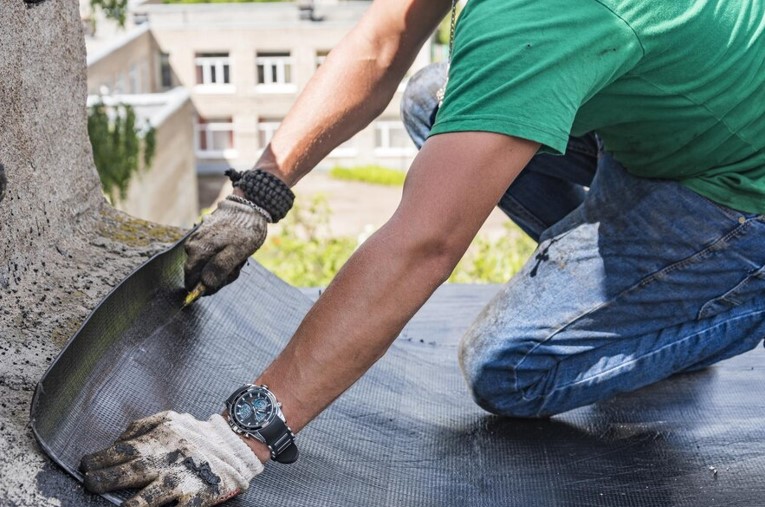Choosing the right roofing materials is a critical decision for homeowners and builders alike. The roof not only protects the building from the elements but also contributes to its aesthetic appeal and energy efficiency. With a myriad of options available in the market, it's essential to carefully consider several factors to ensure you select the most suitable roofing materials for your needs. In this blog, we'll explore six key factors to consider when choosing roofing materials, helping you make an informed decision that enhances the durability, efficiency, and aesthetic appeal of your roof.
1. Climate and Weather Conditions
The climate and weather conditions in your area play a significant role in determining the suitability of roofing materials. Different regions experience varying weather patterns, such as extreme heat, cold, wind, rain, and snow. It's crucial to choose roofing materials that can withstand these local climate challenges effectively. For example, in regions prone to high winds or hurricanes, durable materials like metal roofing or clay tiles may be preferable due to their ability to resist wind uplift and impact damage. Conversely, in areas with hot climates, light-colored and reflective roofing materials can help reduce heat absorption and keep indoor temperatures cooler.
Professional consultations can help you figure out which roofing materials align best with your local weather conditions and your home's specific needs. Beehive State homeowners are often hiring standing seam metal roofers in Utah to ensure their roofs are durable enough to handle heavy snow loads and high winds while providing a modern, clean appearance. These metal roofs are not only weather-resistant but also energy-efficient, helping to regulate indoor temperatures throughout the year. Investing in the right roofing with expert guidance ensures long-term protection and peace of mind for your property.
2. Roof Pitch and Style
The roof pitch and architectural style of your building also influence the choice of roofing materials. Steeper roof pitches may require materials that can shed water efficiently, such as asphalt shingles or metal roofing, while flat or low-slope roofs may benefit from materials like single-ply membranes or built-up roofing systems. The team at GreenTekPS.com adds that TPO (Thermoplastic Polyolefin), EPDM (Ethylene Propylene Diene Monomer), and modified bitumen are excellent materials for flat or low-slope roofs due to their flexibility and ability to withstand water pooling. Additionally, consider the aesthetic appeal and architectural integrity of your roof when selecting materials. For example, traditional homes with steeply pitched roofs may look best with slate or cedar shake roofing, while modern buildings with flat roofs may suit rubber roofing or metal panels.
3. Longevity and Durability
Durability and longevity are essential considerations when choosing roofing materials, as they directly impact the lifespan and maintenance requirements of your roof. Investing in high-quality materials that can withstand the elements and resist damage from factors like UV radiation, moisture, and pests is crucial for ensuring a long-lasting roof. While some materials may have a higher upfront cost, their durability and longevity often make them a more cost-effective option in the long run. Additionally, proper installation and regular maintenance are essential for maximizing the lifespan of roofing materials and preserving the integrity of the roof structure.
4. Energy Efficiency and Insulation
Energy efficiency is becoming increasingly important in building design, and roofing materials play a significant role in determining a building's energy performance. By choosing energy-efficient roofing materials, homeowners and builders can reduce energy consumption, lower utility bills, and improve indoor comfort levels. Materials like cool roofs, reflective roofing, and insulated roofing systems can help minimize heat transfer and reduce the demand for air conditioning during hot summer months. When selecting roofing materials, consider their insulation properties and potential for enhancing energy efficiency to create a more comfortable and sustainable living environment.
5. Budget and Cost Considerations
Budget constraints are a crucial factor for many homeowners and builders when choosing roofing materials. It's essential to set a realistic budget and consider both the initial cost and long-term maintenance expenses of different roofing materials. While some materials may have a higher upfront cost, they may offer lower maintenance requirements and longer lifespans, making them a more cost-effective investment over time. Conversely, cheaper materials may require more frequent repairs or replacements, resulting in higher long-term costs. By carefully weighing the upfront cost against the expected lifespan and maintenance costs, you can choose roofing materials that offer the best value for your budget.
6. Environmental Impact and Sustainability
The environmental impact of roofing materials is another important consideration in today's environmentally conscious world. Many traditional roofing materials, such as asphalt shingles and concrete tiles, have significant environmental footprints due to their manufacturing processes and disposal at the end of their lifespan. To minimize the environmental impact of your roof, consider choosing sustainable roofing materials made from recycled content, reclaimed materials, or eco-friendly options like metal roofing or clay tiles. These materials are often more durable, energy-efficient, and recyclable, making them a greener choice for environmentally conscious homeowners and builders.
Choosing the right roofing materials is a crucial decision that requires careful consideration of various factors, including climate, roof pitch, durability, energy efficiency, budget, and environmental impact. By evaluating these factors and selecting materials that align with your needs, preferences, and values, you can ensure a durable, efficient, and aesthetically pleasing roof that enhances the overall performance and sustainability of your building. Whether you're building a new home or replacing an existing roof, investing in high-quality roofing materials is a wise decision that will pay dividends in terms of durability, energy savings, and environmental stewardship for years to come.










